By Alana Campbell | Junior, Paint Branch High School, Burtonsville, MD | Winter/Spring 2019
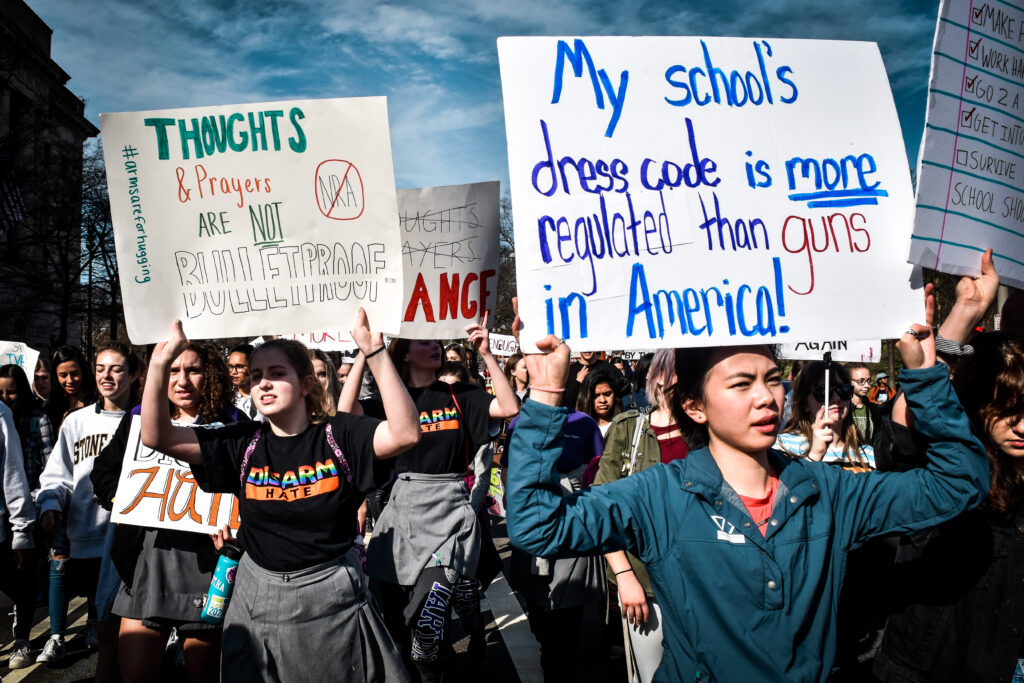
One year after students nationwide walked out of school to honor the 17 killed in the Parkland, Fla., school shooting, high schoolers in the D.C.-Maryland-Virginia area once again took to the streets to pressure lawmakers into passing stricter gun control legislation.
With home-made signs in hands, students from mainly Montgomery County, Md., schools walked off school grounds, then took trains and buses to D.C., where they marched along Pennsylvania Avenue toward the White House.
At 10:00 a.m., behind the fence of the White House, the once talkative protesters devoted a moment of silence to honor all students who have fallen victim to mass shootings.
Then, the march began. A seemingly endless stream of students walked from the White House to the front lawn of the Capitol building, some chanting “Hey hey, NRA, how many kids have you killed today?” and “Thoughts and prayers are not enough. The Senate needs to step it up.”
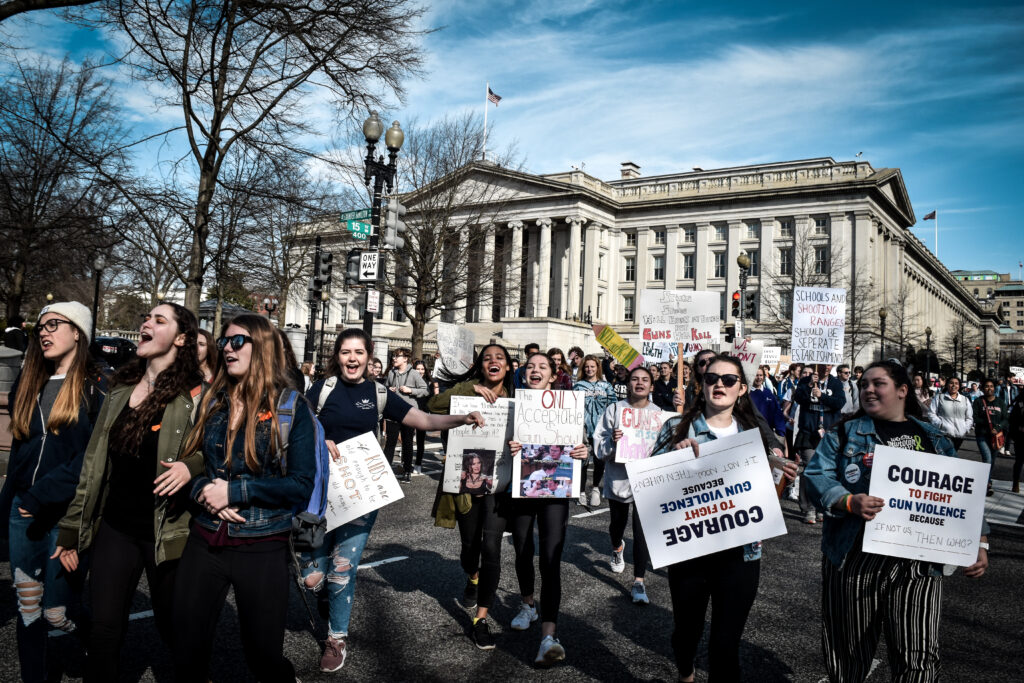
These students, many of whom are too young to vote, are taking matters into their own hands, and it seems to be working. “They have to understand that…it’s our future,” said Johnny Towriss, a representative for MoCo For Change, the Montgomery County student-led organization behind the march. “If we don’t speak on our future, it can be decided by somebody else.”
The young activists are calling out legislators and increasing their numbers in hopes of strengthening their impact. Moco For Change, founded last year following the shooting at Marjory Stoneman Douglas High School in Parkland, Fla., was instrumental in mobilizing thousands of DMV-area students down to the capitol in the widely-publicized march. The group’s goals have since shifted from solely gun control activism to other forms of political participation, including lobbying lawmakers.
Towriss, who joined MoCo For Change roughly three months before the march, said the shift is what initially drew him to the organization. “We are not only tackling issues in the school community, we’re tackling issues that occur within everyday society,” he said.
Their demonstrations have caught the attention of elected officials, the media and other adults who are beginning to take them seriously. Many public figures spoke at the rally, further legitimizing the students’ cause, including Sen. Chris Murphy (D-Conn.), Rep. Ted Deutch (D-Fla.), gun violence survivors and speakers from related organizations like Sandy Hook Promise, Pathways2Power, Students Demand and MoCo For Change.
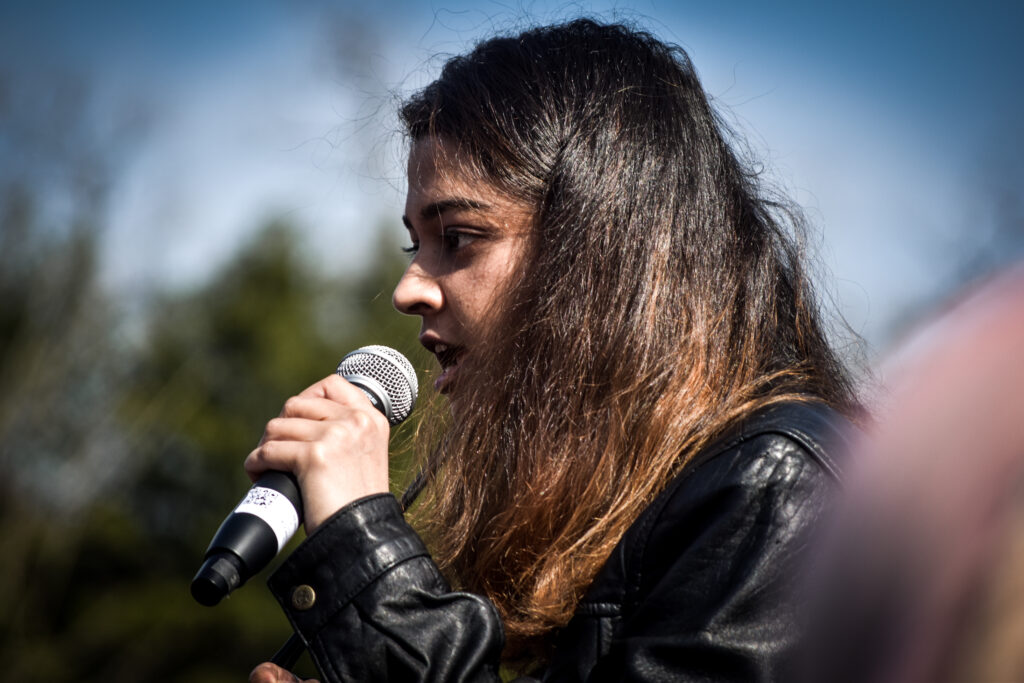
One gun violence survivor, Kate Ranta (see her website here), said she was with her son and her father when her abusive ex-husband, from whom she had fled, found them and began shooting with a gun he legally purchased. She and her father were each shot twice, and her son witnessed the whole incident. Though her ex-husband is serving 60 years in prison, she and her father are still suffering from Post-Traumatic Stress Disorder. Her experience illustrates that current background checks are not strong enough, and stricter regulation is not just a theoretical solution to the problem of gun violence, but actual policy that could save lives, which is something many of these students strongly believe.
The march was, in part, to garner support for two bipartisan background check bills — HR8 and S42 — now circling Congress. At the time of the walkout, HR8 had passed the House and was just four votes away in the Senate. Both bills would require a background check for every firearm sale.
Simon Debesai, a co-founder of MoCo For Change, says the organization has been honored to have considerable support from Speaker of the House Nancy Pelosi (D-Calif.), Sen. Ben Cardin (D-Md.), Sen. Chris Vanhollen (D-Md.), Rep. Joe Kennedy (D-Mass.) and Rep. John Lewis (D-Ga.) who have all attended their sponsored events.
The student activists are making waves beyond Capitol Hill. “The student movement as a whole is contributing to a more politically active and aware 18-24 demographic,” contends Debesai, who points to this as clear evidence resulting from their efforts. “And that will make a huge difference in upcoming elections.”
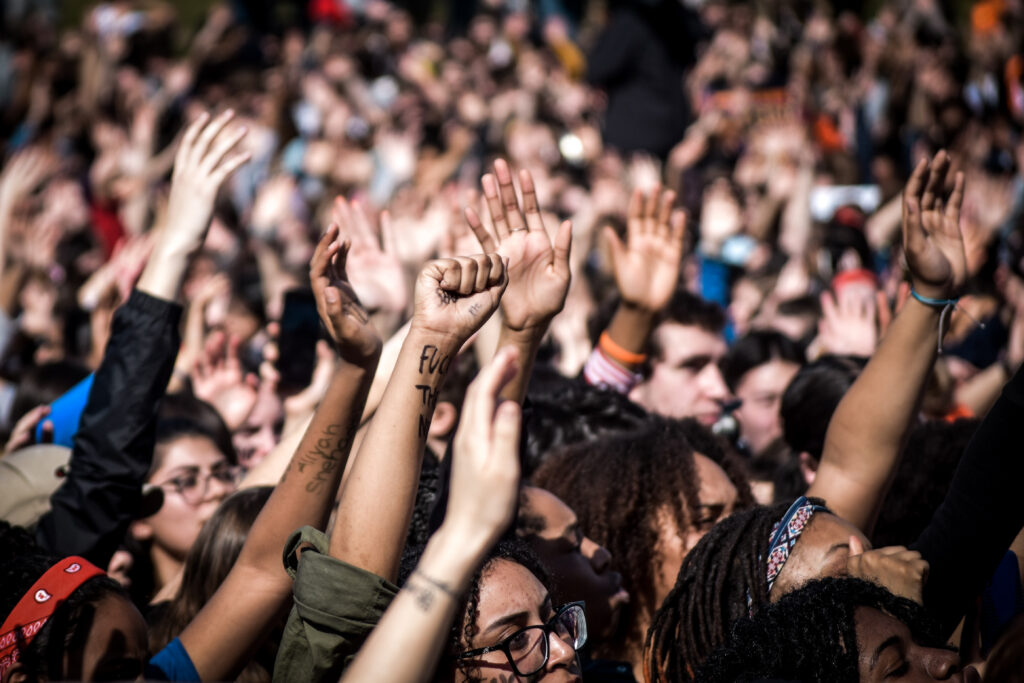
Debasai noted that, since its inception in 2018, Moco For Change alone has tripled in size, and it has instituted chapters all across the area to get even more students directly involved.
Adults alike are noticing the growing student involvement and are largely in support. “All we have is the future,” said Kim Hartwell, a Georgia mother of two, who applauds the youth for their participation. “They have a vested interest in making sure that there are changes made for the betterment of all of us.”
Theresa Willoughby, 29, from Richmond, Va., also supports the young activists, who she encouraged to make their voices heard. “[Activism] is definitely uncomfortable, but being silent is complicit,” she said. “You’re just letting things go. You’re upholding whatever injustice is going on.”
Activist Stephen Giardina, 22, from Long Island, N.Y., said his generation and other young people must get involved. “What’s the alternative? Do nothing?,” he asked. “That’s the risk you have to take if you want change.”
